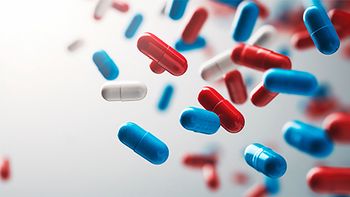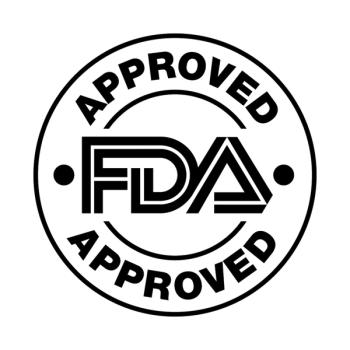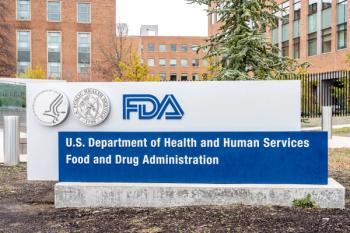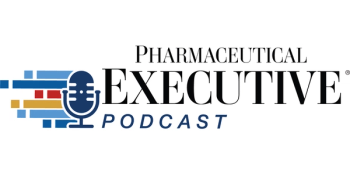
Novo Nordisk’s Sogroya Demonstrates Efficacy in Children with Growth Disorders
Results from the Phase III REAL8 basket study found that once-weekly Sogroya was effective in children with growth disorders, including those born small for gestational age, with Noonan syndrome, or idiopathic short stature.
Results from the Phase III REAL8 basket study show that Novo Nordisk’s Sogroya (somapacitan) demonstrated significant efficacy and was well-tolerated in children with growth disorders, including those born small for gestational age (SGA), with Noonan syndrome (NS), or idiopathic short stature (ISS). These data were presented at the joint Congress of the European Society for Pediatric Endocrinology and the European Society of Endocrinology.1
“Children with growth failure face many health challenges beyond just being shorter than their peers,” REAL8 lead investigator Agnès Linglart, professor, pediatrics, Bicêtre Paris-Saclay University and Hospital, France, said in a press release. “They often have metabolic disruptions and developmental difficulties that can seriously affect their wellbeing and quality of life, as well as long-term effects such as increased risk of cardiovascular disease or type 2 diabetes. The REAL8 data presented today marks an important step forward in providing these patients with an effective, once-weekly option that can potentially reduce treatment burden and improve adherence and treatment outcomes.”
The randomized, open-label, active-controlled, parallel-group REAL8 basket study evaluated the efficacy and safety of once-weekly Sogroya over 52 weeks, with a two-year safety extension follow-up. Patients with Turner syndrome (TS), NS, or ISS were randomly assigned to receive either once-weekly Sogroya 0.24 mg/kg/week or once-daily Norditropin (somatropin) 0.050 mg/kg/day. Children born SGA were randomly assigned to receive either Sogroya 0.24 mg/kg/week, Norditropin low dose 0.035 mg/kg/day, or Norditropin high dose 0.067 mg/kg/day. The primary endpoint of the study was height velocity (HV) at week 52.
Results show that in children born with SGA, Sogroya demonstrated superior annual HV compared to a lower dose of Norditropin (11 vs 9.4 cm/year) and was non-inferior to a higher dose (11 vs 11.1 cm/year). Sogroya was also found to be superior in children with NS (10.4 vs 9.2 cm/year).
In children with ISS, Sogroya achieved non-inferior growth results, with both groups demonstrating 10.5 cm/year. Results for patients with TS are expected later this year. The safety profile of Sogroya was found to be similar to that of once-daily Norditropin.1
According to the United Kingdom’s National Health Service, anywhere from one in 1,000 to one in 2,500 children are born with NS, affecting all ethnic groups and both sexes equally. For cases in which it is hereditary, a child has a 50% chance of inheriting the condition if one parent carries the gene.2
Novo Nordisk stressed that non-adherence to daily growth hormone injections—often due to discomfort, inconvenience, or disruption—can significantly impact outcomes, with one study showing a 6.1 cm height difference over three years between adherent and nonadherent patients.1
“Treatment adherence is an issue when it comes to improving outcomes in children with growth failure,” said Martin Lange, EVP, development, Novo Nordisk, in the press release. “Imagine if a child misses only one day of treatment each week, amounting to 52 missed days per year. Over a seven-year treatment window, this results in one year of missed treatment and can have a significant knock-on impact on their health. We are committed to providing a portfolio of growth hormone therapies with flexibility in administration timing and missed doses, which may better suit the needs of children with growth failure. These encouraging results from REAL8 mark a significant step forward in achieving that commitment.”
Novo Nordisk submitted data from the REAL8 and REAL9 studies in April for regulatory review in both the EU and the United States, covering the SGA, NS, and ISS indications.1
References
1. Novo Nordisk A/S: Once-weekly Sogroya® (somapacitan) is an efficacious and well-tolerated long-acting growth hormone in children with growth disorders: results from REAL8 phase 3 basket study presented at the joint Congress of ESPE and ESE. Novo Nordisk. May 12, 2025. Accessed May 13, 2025. https://www.novonordisk.com/content/nncorp/global/en/news-and-media/news-and-ir-materials/news-details.html?id=916003
2. Noonan syndrome. NHS. Accessed May 13, 2025. https://www.nhs.uk/conditions/noonan-syndrome/#:~:text=It's%20estimated%20that%20between%201,and%20all%20ethnic%20groups%20equally.
Newsletter
Lead with insight with the Pharmaceutical Executive newsletter, featuring strategic analysis, leadership trends, and market intelligence for biopharma decision-makers.





